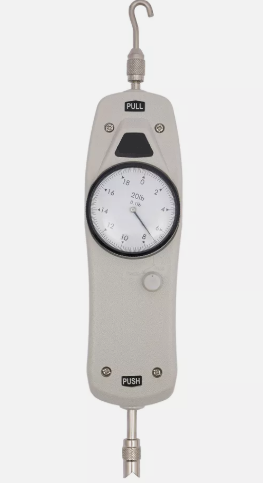

The Americans with Disabilities Act (ADA) was established to protect the rights of people with disabilities and part of this includes ensuring accessible hallways in offices and other facilities. An accessible hallway contributes to a better and effective working environment. In this article, we’ll discuss major considerations and measurements required for an ADA-compliant hallway.
An ADA compliant hallway is determined by the width, clearance and easy accessibility. One of the requirements is that the hallway must be wide enough to accommodate people using mobility aids like wheelchairs. The minimum width for an accessible hallway is 36 inches (3 feet). This is the required measurement that allows a wheelchair user to navigate the hallway comfortably. An ADA tape measure can be used to get the accurate measurements.
However, there are instances where the hallway width must be greater. For instance, if the hallway is about 200 feet in length, the width should be at least 60 inches by 60 inches (5 feet by 5 feet). This space can allow two wheelchair users to pass each other without difficulty.
Hallways with turns or corners require additional width. This width is required so that people using wheelchairs can make a 180-degree turn without obstruction. The minimum width requirement for this should be 60 inches in diameter.
Another factor to consider is the clearance in the hallway. Other objects like shelves and wall fixtures can be installed but not to the point where they reduce the width of the hallway below 36 inches. These objects in the hallway should not extend more than 4 inches from the wall and into the path people use.
The hallway flooring should also be considered. According to the ADA guidelines, the floor surfaces must be stable, firm and non-slippery. If you’re going to install carpets in the hallway, it should have a low pile, usually half an inch or less so that wheelchair users can move around freely.
Level changes in the hallway should be minimized and if it cannot be avoided, a ramp or slope surface should be put in place for easy transition. Ramps should have a slope ratio 1:12 and landings should be provided at both the top and bottom of the ramp for easy movement.
When measuring an ADA-compliant hallway, another factor to consider is the signage and lighting. Signage should be installed at an height that is visible to all users, usually between 48 inches and 60 inches from the floor. Also, the characters on the signs must be large enough for everyone to see. The lighting is also important as it makes the hallway easy to navigate. The lighting should be gentle and uniform so that it doesn’t disrupt people’s sight.

Measuring and building an ADA compliant hallway is important in public spaces and environment. It promote an accommodating environment where everyone can go about their business independently. People using wheelchairs or mobility aids can navigate their way through the hallway without facing any obstruction.



Measuring door pressure is acting in compliance with building regulations, like the Americans with Disabilities Act (ADA). It’s an important step in ensuring accessibility, safety

When talking about building safety, the first things that come to mind are fire alarms, emergency exits and security systems. Meanwhile, the one tool that

The Americans with Disabilities Act (ADA) was established to protect the rights of people with disabilities and part of this includes ensuring accessible hallways in offices and other facilities. An accessible hallway contributes to a better and effective working environment. In this article, we’ll discuss major considerations and measurements required for an ADA-compliant hallway.
An ADA compliant hallway is determined by the width, clearance and easy accessibility. One of the requirements is that the hallway must be wide enough to accommodate people using mobility aids like wheelchairs. The minimum width for an accessible hallway is 36 inches (3 feet). This is the required measurement that allows a wheelchair user to navigate the hallway comfortably. An ADA tape measure can be used to get the accurate measurements.
However, there are instances where the hallway width must be greater. For instance, if the hallway is about 200 feet in length, the width should be at least 60 inches by 60 inches (5 feet by 5 feet). This space can allow two wheelchair users to pass each other without difficulty.
Hallways with turns or corners require additional width. This width is required so that people using wheelchairs can make a 180-degree turn without obstruction. The minimum width requirement for this should be 60 inches in diameter.
Another factor to consider is the clearance in the hallway. Other objects like shelves and wall fixtures can be installed but not to the point where they reduce the width of the hallway below 36 inches. These objects in the hallway should not extend more than 4 inches from the wall and into the path people use.
The hallway flooring should also be considered. According to the ADA guidelines, the floor surfaces must be stable, firm and non-slippery. If you’re going to install carpets in the hallway, it should have a low pile, usually half an inch or less so that wheelchair users can move around freely.
Level changes in the hallway should be minimized and if it cannot be avoided, a ramp or slope surface should be put in place for easy transition. Ramps should have a slope ratio 1:12 and landings should be provided at both the top and bottom of the ramp for easy movement.
When measuring an ADA-compliant hallway, another factor to consider is the signage and lighting. Signage should be installed at an height that is visible to all users, usually between 48 inches and 60 inches from the floor. Also, the characters on the signs must be large enough for everyone to see. The lighting is also important as it makes the hallway easy to navigate. The lighting should be gentle and uniform so that it doesn’t disrupt people’s sight.

Measuring and building an ADA compliant hallway is important in public spaces and environment. It promote an accommodating environment where everyone can go about their business independently. People using wheelchairs or mobility aids can navigate their way through the hallway without facing any obstruction.